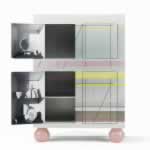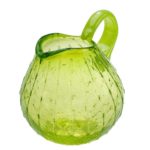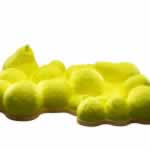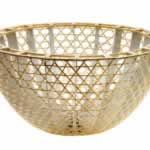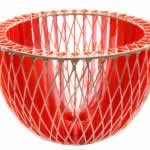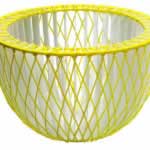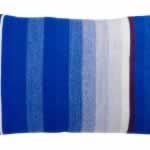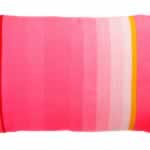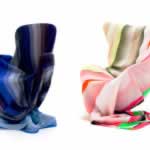Scholten & Baijing have been working together since 2000, with the creation of their studio; Stefan Scholten studied at the Eindhoven Design Academy, while Carole Baijings is self-taught. After the realization of several projects in which the boundaries between autonomous and applied work are perceived, in their subsequent works there is more interest in interior design up to be considered as one of the most interesting, innovative and dynamic duo in the field of world level.
Famous for their sensitive and discreet but functional products, their extraordinary and often unexpected use of color, their exquisitely made objects, they have applied their unique style in the most diverse sectors, from ceramics and silverware to fabrics and even to a concept car.
Scholten & Baijings have received numerous prestigious awards such as the Elle Decoration International Design Award (EDIDA) for Young Designer Talent 2011, the nomination for the Designer of the Year at the Wallpaper * Design Awards 2015 and the Oeuvre Sanoma Woon Awards 2014.
Their products and limited editions are exhibited in museums and galleries such as the Cooper-Hewitt National Design Museum in New York, the Art Institute of Chicago, the Victoria & Albert Museum in London and the Boijmans van Beuningen Museum in Rotterdam. Their clients include many contemporary and experimental companies such as Maharam, Hay, Ikea, Karimoku New Standard, Georg Jensen, 1616 / Arita Japan, Moooi …
Based on extensive research on Arita ceramics and the analysis of local historical masterpieces, for example, Scholten & Baijings have created a series called colored porcelain. Typical Japanese colors, such as, for example, light green aquarelle-blue, red-orange and ocher, are recontextualized and applied in new combinations in a set of functional contemporary tableware that overall still reflect the typical Arita color spectrum, in a new and unedited refined and very contemporary image. The layered color compositions are carried out in various enamel textures and shades and are combined with the natural white of the porcelain itself. Made with a delicate sense of local craftsmanship, the color of the porcelain shows an original European perspective on the Japanese tradition.
This same approach has been used for many other materials such as wool, wood, glass, always looking for unusual combinations of colors, the result of stratifications and reflections and with an eye always turned to the Dutch tradition. From 2019 the two designers have decided to continue the work independently.

